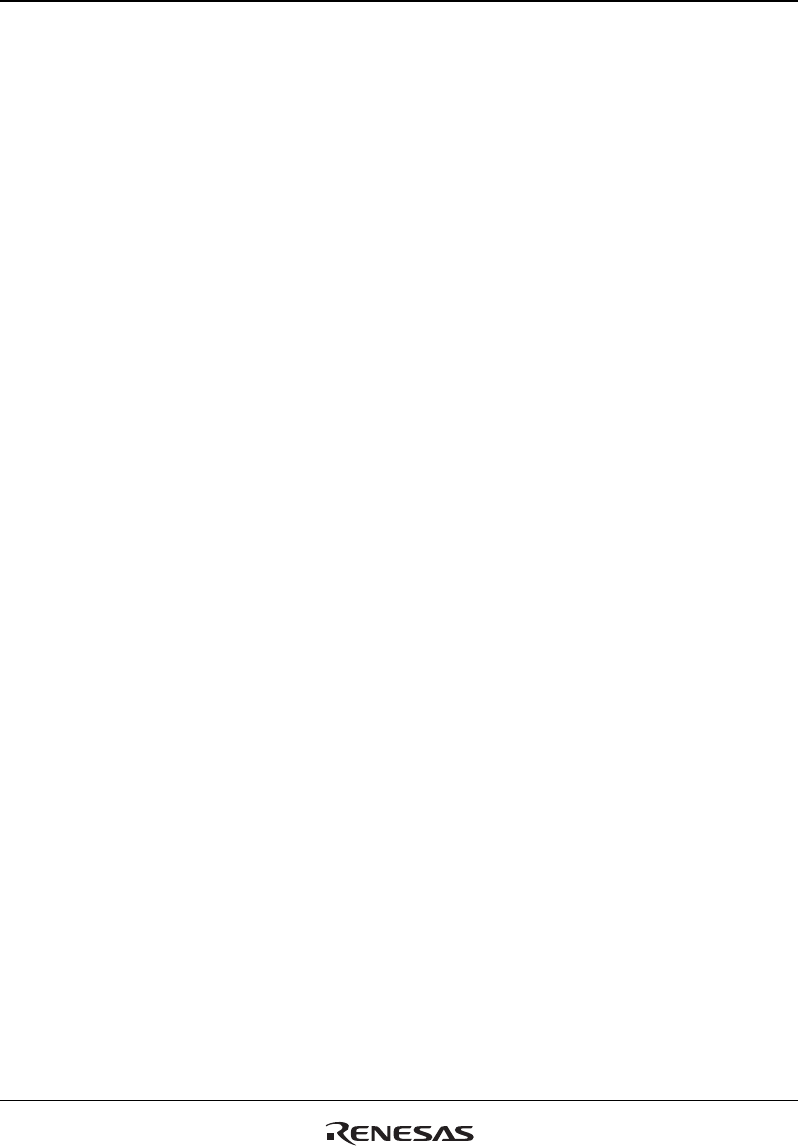
Section 19 Serial Communication Interface with FIFO (SCIF)
Rev. 4.00 Sep. 14, 2005 Page 744 of 982
REJ09B0023-0400
The number of receive data bytes in SCFRDR can be found from the lower 8 bits of the FIFO
data count register (SCFDR).
3. Break Detection and Processing
Break signals can be detected by reading the RxD pin directly when a framing error (FER) is
detected. In the break state the input from the RxD pin consists of all 0s, so the FER flag is set
and the parity error flag (PER) may also be set. Note that, although transfer of receive data to
SCFRDR is halted in the break state, the SCIF receiver continues to operate.
4. Sending a Break Signal
The I/O condition and level of the TxD pin are determined by the SPB2IO and SPB2DT bits in
the serial port register (SCSPTR). This feature can be used to send a break signal.
Until TE bit is set to 1 (enabling transmission) after initializing, TxD pin does not work.
During the period, mark status is performed by SPB2DT bit. Therefore, the SPB2IO and
SPB2DT bits should be set to 1 (high level output).
To send a break signal during serial transmission, clear the SPB2DT bit to 0 (designating low
level), then clear the TE bit to 0 (halting transmission). When the TE bit is cleared to 0, the
transmitter is initialized regardless of the current transmission state, and 0 is output from the
TxD pin.
5. Receive Data Sampling Timing and Receive Margin (Asynchronous Mode)
The SCIF operates on a base clock with a frequency of 16 times the transfer rate. In reception,
the SCIF synchronizes internally with the fall of the start bit, which it samples on the base
clock. Receive data is latched at the rising edge of the eighth base clock pulse. The timing is
shown in figure 19.19.


















